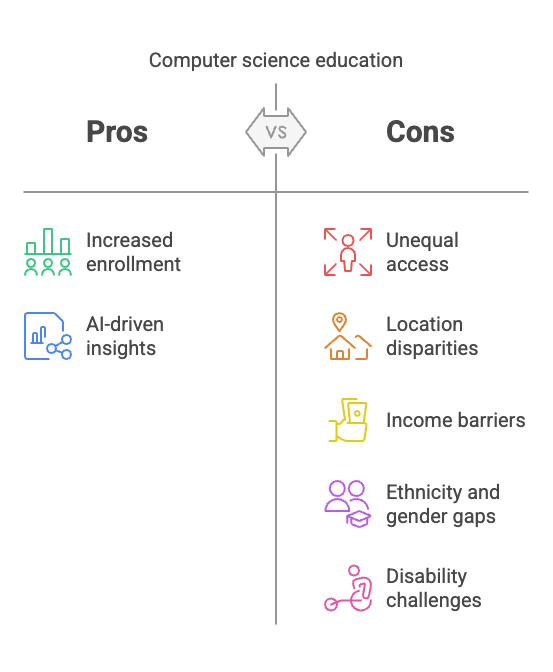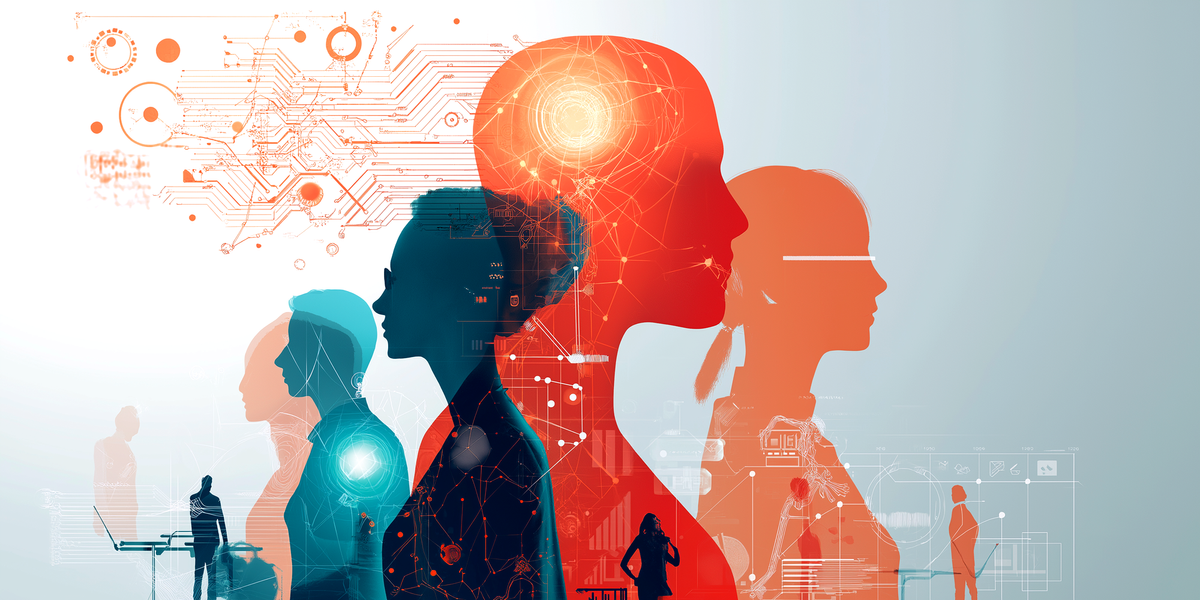Insights from Stanford’s 2025 AI Index Report
Stanford’s Institute for Human Centered Artificial Intelligence recently released the 2025 AI Index Report, highlighting how artificial intelligence is reshaping education worldwide. Chapter 7 specifically dives into how AI and human collaboration is essential to solving some of education’s biggest challenges and creating exciting new opportunities along the way.
Education is Changing, but AI Needs Human Partners
Growing Interest in Computer Science but Equity Remains Elusive
More U.S. high school students are taking computer science courses, which is great news. But there’s a problem, access to these courses still depends heavily on factors like location, income, ethnicity, gender, and disabilities. Human insight, coupled with AI-driven data analytics, could pinpoint exactly where these inequalities persist, helping educators and policymakers close the gap effectively.

Teachers Embrace AI but Need More Support
Most computer science teachers (81%) agree that AI belongs in foundational education. However, fewer than half feel confident or prepared to teach it. This highlights a clear need for collaboration. Educators need training resources shaped by human expertise, supported by AI tools that simplify curriculum design and personalize professional development.

Global Expansion of Computer Science Education
Around the globe, computer science education is rapidly growing in K to 12 schools. Since 2019, the number of countries introducing or planning CS programs has doubled. While progress in regions like Africa and Latin America is promising, basic infrastructure challenges such as reliable electricity and internet access still hold many students back. AI-driven technology combined with human innovation could offer practical, creative solutions to these infrastructural hurdles.

Rapid Increase in AI Degrees Signals a New Workforce
Interest in AI-focused university programs is booming, with nearly twice as many master’s graduates in AI in the U.S. between 2022 and 2023. As AI skills become increasingly critical, effective collaboration between AI tools and educators will help institutions stay responsive, ensuring students are prepared for a swiftly evolving job market.
Leading in Tech Graduates and Gender Equality
The United States leads globally in producing graduates in Information, Communication, and Technology (ICT), followed closely by countries like Spain, Brazil, and the UK. Notably, Turkey has made impressive strides in achieving gender equality among ICT graduates. Human-led initiatives combined with AI-driven insights can replicate these successes worldwide, fostering greater diversity in tech fields.

The Power of AI and Human Collaboration
The message is clear: humans and AI need each other. Here’s why:
Empowering Teachers Through Collaboration
Teachers can’t tackle the complexities of AI education alone. They need targeted support, combining AI-driven resources with human guidance to confidently teach and inspire students.
Closing Educational Gaps Together
AI can identify precisely where inequities occur, but it takes human action, compassion, and strategic planning to bridge those gaps effectively.
Global Teamwork for Greater Impact
Creative, AI-supported solutions to infrastructure challenges in education require people to implement and sustain meaningful change.
Preparing Today’s Students for Tomorrow’s Careers
To keep pace with rapid industry shifts, educators and AI systems must collaborate to continually adapt curricula and teaching strategies.

Nestor Maslej, Loredana Fattorini, Raymond Perrault, Yolanda Gil, Vanessa Parli, Njenga Kariuki, Emily Capstick, Anka Reuel, Erik Brynjolfsson, John Etchemendy, Katrina Ligett, Terah Lyons, James Manyika, Juan Carlos Niebles, Yoav Shoham, Russell Wald, Tobi Walsh, Armin Hamrah, Lapo Santarlasci, Julia Betts Lotufo, Alexandra Rome, Andrew Shi, Sukrut Oak. “The AI Index 2025 Annual Report,” AI Index Steering Committee, Institute for Human-Centered AI, Stanford University, Stanford, CA, April 2025.
